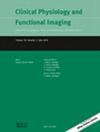Age differences and reliability of the skeletal muscle quality measurements in women and their relationship with cardiovascular risk
Abstract
Introduction
Muscle quality is well-known to decrease with aging and is a risk factor for metabolic abnormalities. However, the impact of muscle quality decline among aging women and its association with cardiovascular risk remains unclear. Thus, this study aimed to compare muscular outcomes and investigate whether a correlation exists between muscle quality and cardiovascular risk factors in women. The reliability of muscle quality measurements in young and older women was also addressed.
Methods
Forty-eight participants were recruited for the study, including 24 young adults (24 ± 4 years) and 24 older women (66 ± 5 years) were submitted to the evaluation of muscle echo intensity (EI - an indicator of morphological muscle quality) using ultrasound, muscle strength, hemodynamic measurements (systolic and diastolic blood pressure), cardiovascular risk biomarkers, and cardiovascular risk tools (Framingham score and vascular age).
Results
Muscle strength and both functional and morphological muscle quality were greater (p < 0.05) in young women compared to older women. Functional muscle quality was inversely associated with systolic and diastolic blood pressure, while muscle EI was positively associated with fasting glucose levels. All muscle strength and muscle quality measurements demonstrated very good test-retest reliability (ICC ≥ 0.98) and low coefficients of variation (<1.5%).
Conclusion
These findings suggest that muscle strength and quality differ by age group and are associated with specific cardiovascular risk markers in women. Ultrasound-derived assessments of muscle quality appear to be highly reliable across age groups and may serve as useful tools for research on muscle health and cardiometabolic risk.

 求助内容:
求助内容: 应助结果提醒方式:
应助结果提醒方式:


